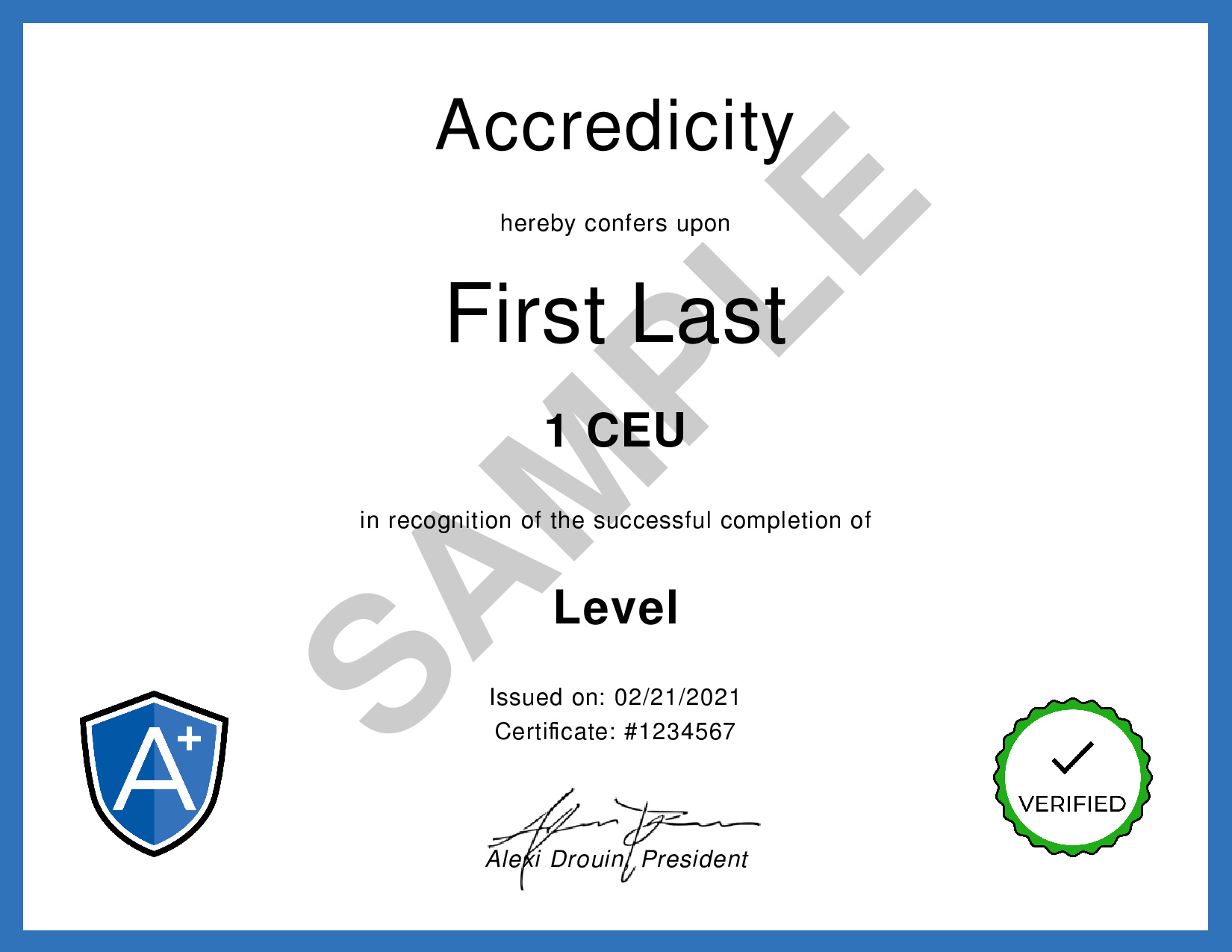Brief History Quantum Mechanics – Sean Carroll | The Royal Institution
Reference: The Royal Institution. (2020, February 06). A Brief History of Quantum Mechanics - with Sean Carroll [Video]. YouTube.
We Make Your Education Count

Get the Credit You Deserve and Become the Most Attractive Job Candidate by Earning and Posting A+ Badges to Your Linkedin Profile.
Sign Up to Get Started at Accredicity
|
Unlock the secrets of Quantum Mechanics with renowned physicist Sean Carroll - A Brief History of Quantum Mechanics. A Brief History of Quantum Mechanics with Sean Carroll is a fascinating look at the history and development of one of the most important scientific concepts of the 20th century. In this video, Sean Carroll, a theoretical physicist, guides viewers through a brief history of quantum mechanics, discussing topics such as the wave-particle duality of light, the Copenhagen interpretation, and the development of the field of quantum mechanics. Along the way, he explains how this remarkable concept has shaped the world of physics and inspired countless other scientific discoveries. He also touches on the implications of quantum mechanics for life and the universe. This video is a must-watch for anyone interested in the history of science and the amazing discoveries that have shaped our world. Learning Outline1. Quantum Mechanics is an area of physics that studies how the universe works on the smallest scales. Instructional ContentQuantum mechanics is a field of science that studies the behavior of matter and energy at the smallest scales. It is one of the most important theories in physics, describing the behavior of everything from atoms and molecules to stars and galaxies. In this video, renowned physicist Sean Carroll presents a brief history of quantum mechanics, beginning with its origins in the early 20th century. He explains how the pioneers of quantum mechanics, such as Max Planck and Erwin Schrödinger, developed the theory and how their work laid the foundation for modern quantum physics. Carroll then explains how quantum mechanics was used to explain the behavior of light and how it predicted the existence of particles like electrons and protons. He also discusses how quantum mechanics revolutionized our understanding of the nature of matter and energy and how it provides a basis for modern technologies such as lasers and transistors. Finally, Carroll explains the many mysteries that still remain in quantum mechanics, such as the nature of quantum entanglement, the role of the observer, and the implications of the theory for our understanding of the universe. He ends with a thoughtful conclusion emphasizing the importance of quantum mechanics in understanding the world around us. This video provides an engaging overview of the history and fundamentals of quantum mechanics. It is an excellent resource for anyone interested in learning more about this fascinating field of science. By watching this video, viewers will gain an appreciation for the revolutionary breakthroughs made by the pioneers of quantum mechanics and the profound implications of their work for our modern world. Cognition
|

Quantum mechanics is a way of understanding how tiny particles like atoms and electrons work. It's like a special set of rules that explain what happens when these little things bump into each other. The rules are super weird, but they help us understand how things like lasers, computers, and even our bodies work. It's like a secret language only scientists know that helps us explore the universe! Video Quotes"Quantum mechanics does not tell us what things are made of, it tells us how things behave. That's the fundamental difference between quantum mechanics and classical mechanics." - Sean Carroll "The universe is not composed of particles, it's composed of fields. Fields are much more fundamental than particles." - Sean Carroll "Quantum mechanics is not just a theory of particles, it's a theory of fields, which is the most fundamental way of describing the world." - Sean Carroll Related Quotes"The equations of quantum mechanics are not just simple modifications of the equations of classical mechanics. They represent a radical rethinking of the nature of reality." - Sean Carroll "Quantum mechanics tells us that the world is not deterministic, that things can happen spontaneously that are not determined by what happened before." - Sean Carroll "Quantum mechanics offers us a new way of understanding how the world works, a new way of thinking about things." - Sean Carroll Competencies1. Information Literacy Learning Outcomes1. Remember: Students will be able to recall the major events and developments in the history of quantum mechanics. Sample Answers1. In the video, Sean Carroll explains the history of quantum mechanics. He covers the early discoveries of Max Planck, Albert Einstein, and Niels Bohr, as well as their contributions to the development of the theory. He also explains how quantum mechanics has since been used to explain many phenomena in the world around us, such as the behavior of atoms, molecules, and light. 2. In the video, Carroll explains the idea of wave-particle duality, which states that particles can exhibit both wave-like and particle-like characteristics. He also explains how quantum entanglement works, which is when two particles interact in such a way that they become linked even over great distances. 3. Carroll also explains the uncertainty principle, which states that the exact position and velocity of particles cannot be known simultaneously. He also explains the concept of the double-slit experiment, which demonstrates the wave-like behavior of particles. Sean CarrollSean Carroll is a theoretical physicist and cosmologist at Caltech and a research professor in the Department of Physics at the University of Chicago. He is an expert in A Brief History of Quantum Mechanics due to his extensive research on the subject, including his book "The Big Picture: On the Origins of Life, Meaning and the Universe Itself." He is also the host of the "Mindscape Podcast," which features interviews with experts in the field of quantum physics. He is affiliated with the Royal Institution, a scientific charity that works to "inform, educate and inspire people about science," as well as the Institute for Advanced Study in Princeton, New Jersey. Sean Carroll Learning DesignThe competencies of Information Literacy, Cognitive Flexibility, and Critical Thinking are important for the courses on Cognition as they are essential skills for learners to develop an understanding of the subject matter. Information Literacy helps learners to find, access, assess, and use information from a variety of sources, while Cognitive Flexibility allows learners to think more flexibly and creatively about the material. Critical Thinking, meanwhile, helps learners to evaluate the quality and relevance of information, as well as to identify and develop solutions to problems. In order to help students build these competencies, a constructivist teaching framework can be used. This framework allows the learners to develop their own understanding through exploration and reflection, encouraging them to draw their own conclusions. Through the use of activities such as open-ended questions, problem-based learning, and project-based learning, students will be able to construct their own knowledge and develop the competencies of Information Literacy, Cognitive Flexibility, and Critical Thinking. Additionally, activities such as discussions and debates can be used to help students practice their critical thinking skills. Finally, metacognitive strategies such as self-assessment and reflective journaling can be used to help students become more aware of their own learning and to help them develop skills in Cognitive Flexibility. AssessmentQ: What is the Heisenberg Uncertainty Principle? Answer: B) A law of physics that states that it is impossible to know both the position and momentum of a particle Questions1. What is the central concept of quantum mechanics? KeywordsQuantum Mechanics, Sean Carroll, Quantum Theory, Wave Function, Schrödinger Equation, Electron Energy, Heisenberg Uncertainty, Quantum Field Theory, Quantum Computing, Planck Constant. Facts1. Quantum mechanics was developed by a group of physicists known as the 'founding fathers' in the early 1900s. Trends1) Create an educational game based on the history of Quantum Mechanics. The game could involve solving puzzles and completing tasks related to concepts from the video, such as wave-particle duality and the Heisenberg Uncertainty Principle. 2) Develop an interactive website that contains a timeline of the history of Quantum Mechanics, with clickable events that lead to more detailed explanations and illustrations. 3) Create a 3D animation of the development of Quantum Mechanics, highlighting the major contributors and their theories. 4) Write and publish a book about the history of Quantum Mechanics, including detailed explanations and diagrams of the theories presented in the video. 5) Develop a board game that involves players competing to complete experiments and develop theories related to the history of Quantum Mechanics. SourceThis learning instructional guidance was formulated using the GPT-3 language model created by OpenAI. ShareQuantum Mechanics has shaped our understanding of the world around us! 🤯 Sean Carroll explains its history & importance in this video - from early 20th century breakthroughs to modern applications. #quantummechanics #science #physics #SeanCarroll @Accredicity |






 38 Creds - Cognition
38 Creds - Cognition



